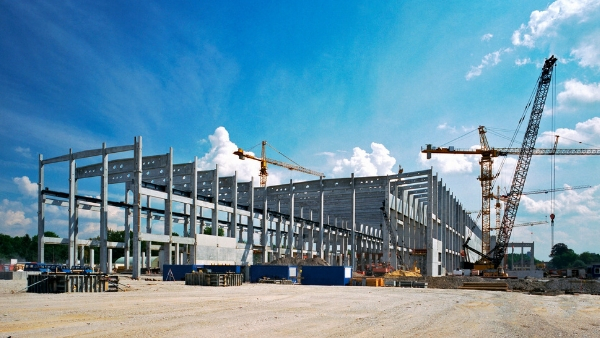Challenges of developing large strategic housing sites
As part of the Government’s Plan for Change, to build 1.5m new homes and critical infrastructure by 2030, we are seeing a push by the Government to promote and develop a greater number of larger housing schemes and strategic new settlements. This article explores some of the issues applicable to landowners and developers who may be considering becoming involved in these larger housing schemes.
The current average size for a residential development scheme in England is around 60 homes, but under the Government’s new strategy we are likely to see a trend towards more larger scale developments. We look at some of the considerations and issues that landowners and developers should be aware of:
1. Different approach to planning
It is sometimes difficult to deliver strategic sites which are in multiple landownerships via traditional planning permissions. Instead, the facilitation for larger schemes may be achieved via Supplementary Planning Documents and/or Local Development Orders (LDOs). LDOs were brought in to simplify or streamline the planning process for the delivery of larger schemes. Although they provide permitted development rights, they still involve approvals and satisfaction of conditions under a truncated planning process which individual landowners and developers will need to understand and comply with fully. LDOs may be accompanied by design code policy requirements which developers could find difficult or more expensive to implement. Government and industry bodies like the CBI, see LDOs as a valuable catalyst for development, but they require political impetus to establish and are usually time limited. A few New Towns (over 10,000 homes) around the country would of course help to increase the numbers of homes significantly, but (without meaningful Government intervention) it generally takes a while for approval to be obtained. Then the delivery rate is still dependant on a large range of issues from availability of materials and a skilled workforce, to a strong financial package being in place from the start (the enabling infrastructure costs of a New Town are massive), to the actual uptake for the range of housing being provided, to there being individuals who are able to afford to buy and or rent or obtain a suitable mortgage product. Historically, the delivery rate of New Towns has not kept pace with aspirations. Will we therefore see a greater focus on slightly smaller schemes, perhaps of 3,000 to 5,000 homes, under a conventional Local Plan allocation and then outline application route? With the recent changes to the Green Belt/Grey Belt rules and the Government’s strong drive for a huge increase in houses, we are seeing some landowners considering putting forward their sites without first trying to obtain an allocation.
2. Infrastructure requirements
Larger schemes often require new or significant upgrades to existing infrastructure e.g. roads, grid infrastructure, renewable energy, schools, doctors’ surgeries and other community facilities. The infrastructure requirements are often such that many of the above need to be installed a while before any value generating development and they may require works on a sitewide basis and significant commitments from third party infrastructure developers and operators. This makes it very difficult or impossible for SME developers of individual land parcels comprised within a larger scheme area to fund the delivery of infrastructure without third party help, either from statutory undertakers or the public sector, such as Homes England. There are calls for new types of (and more flexible) finance for this scale of infrastructure to be provided, perhaps on the basis of Government backing/guarantees.
3. Public funding
If such Government backed funding packages do not become readily available, additional public funding is more likely to be required for larger schemes with greater infrastructure requirements. This may necessitate a greater level of public sector involvement in the project, as for example local authority sponsorship is required in order to secure infrastructure funding, through initiatives such as the Housing Infrastructure Fund. The allocation of funding, timing of applications, and grant application process as well as local politics are therefore likely to play a more significant role in these projects where there is a greater political dynamic. Local politics undoubtedly play a much greater part in the promotion of larger sites because of the actual or perceived impact of the resulting development.
4. Compulsory purchase powers
Government is encouraging greater use following broadening and streamlining of powers under the Levelling Up and Regeneration Act 2023, and with further reforms proposed under the Government’s latest Planning and Infrastructure Bill. It remains the case that compulsory purchase will be an option intended for where negotiations have not succeeded and where there is a compelling case in the public interest. Acquiring authorities are being encouraged to use the powers to progress stalled schemes or where there are viability challenges. For landowners, navigating compulsory purchase can be complex and there are very specific processes to follow and rules around valuation and compensation.
5. Land assembly and local authority lead
Coordinating land assembly is frequently a challenge for complex sites. Multiple landowners must reconcile their individual interests and priorities to fit with those of their neighbours, in order to deliver a successful development. Landowner collaboration agreements are usually required to enable landowners to work together and to overcome the risk of being ransomed by competing nearby development. On bigger schemes, we are seeing a trend towards local authorities taking more of a lead role. This is particularly the case where an authority is looking to give a scheme strategic priority, or allocate significant resources or necessary funding. In these circumstances, we see evidence of authorities looking to take a project lead or development management role.
6. Phasing of delivery
Given their scale, strategic developments are phased with development taking place in multiple tranches over many years. The phasing of tranches may not align with the boundaries of individual landowners’ holdings or the contribution of their ownerships. Phasing therefore gives rise to a much greater need for landowners to coordinate when and how their land is promoted and disposed of for development. Taxation and succession issues can be very significant factors. An individual landowner may need to ensure that they dispose of their whole interest to benefit from certain tax reliefs e.g. Business Asset Disposal Relief, or otherwise in order for the landowner to be left with a reduced land holding that remains viable to support the operation of any existing business that trades from the property. It may be very difficult for example for a dairy farmer to support their herd if they dispose of half or their original acreage.
7. Succession issues
There are considerations of timing and future planning that landowners need to think about before committing to a longer-term strategic land project. What makes good sense now in terms of disposing of an existing farming business may not hold true in the medium term, particularly if there is a realistic possibility of generational succession over that period. Conflation of development and agricultural land values can create unwelcome consequences for increased inheritance tax liabilities. On the other hand, given the long gestation of strategic development land projects, landowners may have no choice but to bind in their land for the medium to long term if they are to stand a chance of getting it developed.
8. Challenges of scale
Bigger schemes bring a range of additional considerations. Although the promise of development on a bigger scale appears an attractive and a neat way to increase the speed of housing delivery and utilisation of a much greater proportion of a landowner’s land holding, that is not always the case. Housing supply and demand operates differently at local and national levels. Developing too many homes too quickly or with too many outlets locally risks market distortion and damage. Many regional housebuilders or even regional offices of national housebuilders are not well placed to bear these impacts which can undermine the success and viability of undertaking larger schemes. As the market currently operates, larger schemes are not necessarily cheaper or quicker to deliver, and without suitable checks and balances in place in favour of the landowner may result in a discounted return in land values offered to landowners once a scheme exceeds a critical size.
9. Contamination
This remains an ongoing financial challenge for all types of development. It is of course extremely important for appropriate checks to be made at the right time in the option, application or purchase process.
10. Natural Capital
All largescale development now needs to consider Biodiversity Net Gain. Although the BNG hierarchy remains the same, requiring onsite provision to be considered before offsite, the cost of delivering onsite BNG when compared to the price of buying units from offsite habitat banks, is encouraging some developers to favour this offsite approach. For some proposed developments, the landowner is planning to roll out a habitat bank on another part of the overall landholding, from the area which is being put forward for housing development. This will, in addition, remove the practical challenges for developers providing BNG on site – the quality of piecemeal onsite BNG is never going to be as good as that provided over a wider offsite area, especially where the habitat is away from dog walkers or others wishing to make the most of some green recreation space. Some sites will also need to consider nutrient neutrality. Again, this provision could potentially be made by the same landowner or perhaps even another nearby, especially where largescale developments may need to buy many units. The Planning and Infrastructure Bill is currently proposing significant changes as to how nutrient neutrality is to be achieved (but it is not proposing to change the way in which BNG is provided), so, in the future, a developer might need to make a payment into the Nature Restoration Fund. It is not yet clear how the requirements will be enacted.
Michelmores strategic land and development teams are experienced in undertaking large scale development across a range of greenfield and brownfield sites for residential and commercial purposes. If you would like to discuss any of the points in this article in more detail, Mark Howard, Fergus Charlton, Helen Hutton, Adam Corbin or Ben Sharples.






